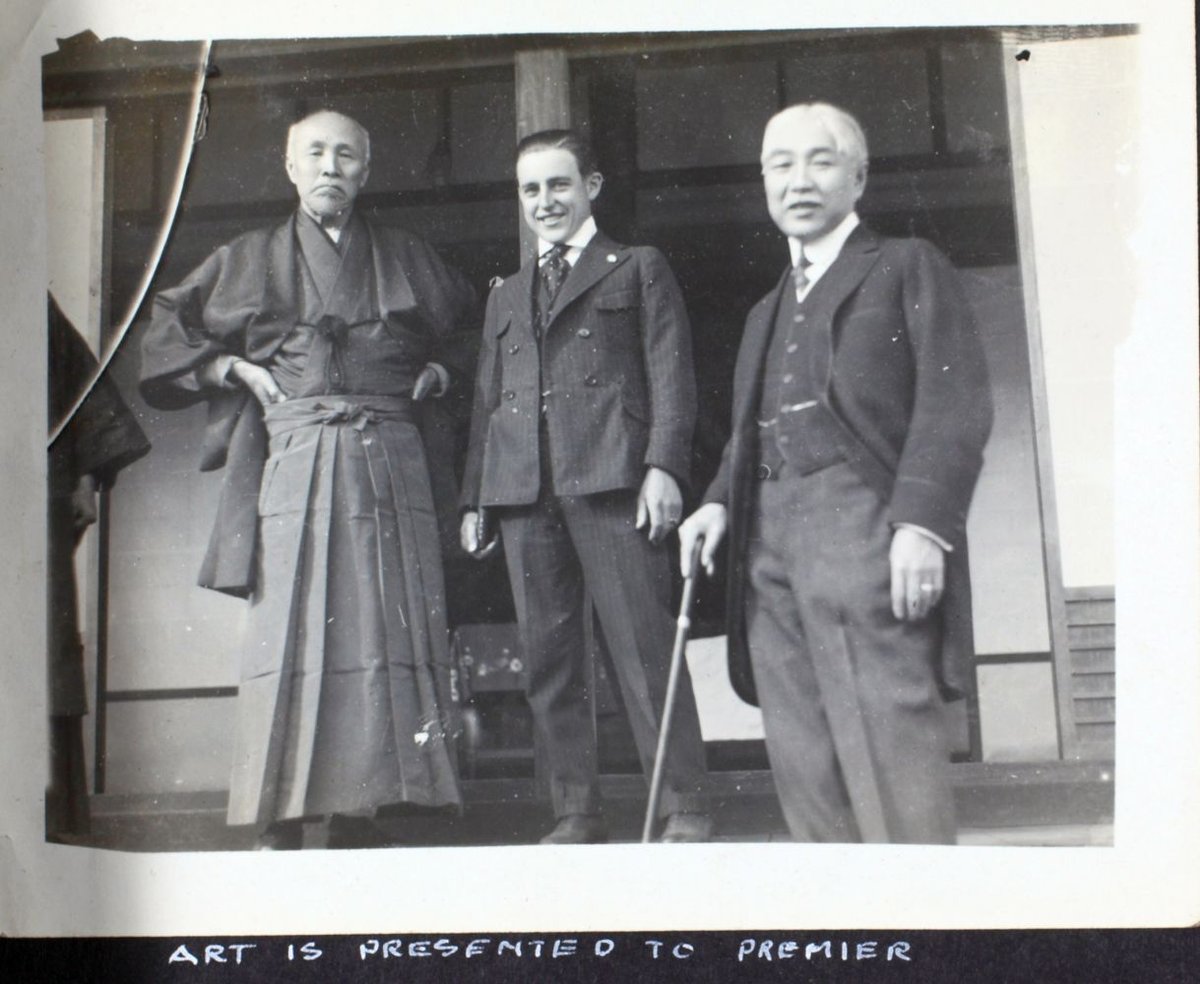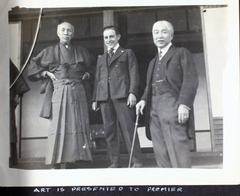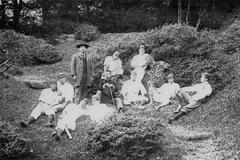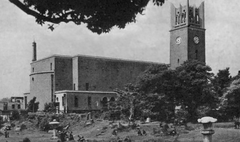
Ōkuma Garden Tokyo: Visiting Hours, Tickets, and Historical Sites Guide
Date: 15/06/2025
Introduction
Ōkuma Garden (大隈庭園, Ōkuma Teien) is a tranquil and historically rich Japanese stroll garden located within the campus of Waseda University in Tokyo’s Shinjuku ward. Originating during the Edo period and later shaped by the vision of Meiji-era statesman and Waseda University founder Shigenobu Ōkuma, the garden blends traditional Japanese aesthetics with Western horticultural influences. Today, it serves as a living symbol of Tokyo’s cultural evolution, academic spirit, and resilience. Whether you’re a history enthusiast, a lover of nature, or simply seeking a peaceful retreat in Tokyo, Ōkuma Garden offers a unique glimpse into the city’s multifaceted heritage (Waseda University, Go Tokyo).
Table of Contents
- Early Origins and Historical Background
- Shigenobu Ōkuma’s Vision and the Meiji Era
- Garden Design: Japanese and Western Features
- Wartime Damage, Restoration, and Preservation
- Visiting Information: Hours, Tickets, and Accessibility
- Seasonal Highlights and Botanical Features
- Architectural and Symbolic Structures
- Cultural and Academic Significance
- Travel Tips and Nearby Attractions
- Visitor Guidelines and FAQs
- Visual Highlights
- Plan Your Visit and Stay Connected
1. Early Origins and Historical Background
Ōkuma Garden traces its roots to the Edo period (1603–1868) when the land was part of a feudal estate. During this time, gardens were designed to embody harmony with nature and serve as venues for social and political gatherings among the daimyo. The original layout included water features, carefully placed stones, and plantings designed to evoke famous landscapes and poetic scenes, reflecting the garden philosophy of the era (Go Tokyo).
2. Shigenobu Ōkuma’s Vision and the Meiji Era
The transformation of the estate into a public cultural asset began under Shigenobu Ōkuma (1838–1922), a prominent statesman and founder of Waseda University. In 1884, Ōkuma acquired the property, intending to create a space for intellectual growth and contemplation. He oversaw the garden’s design, merging Japanese strolling garden traditions with Western influences, such as open lawns and a pioneering greenhouse for melon cultivation—marking the first indoor melon production in Japan (Waseda University, Trip to Japan).
After Ōkuma’s death, the garden was donated to Waseda University, further solidifying its role as an academic and cultural landmark.
3. Garden Design: Japanese and Western Features
Ōkuma Garden’s layout exemplifies the Chisen Kaiyu (池泉回遊式) style—a Japanese landscape garden with a central pond, meandering paths, and artificial hills that encourage exploration and changing vistas (Visit Waseda). Western elements include expansive lawns and exotic plantings, reflecting Ōkuma’s forward-thinking approach. The blend of East and West creates a unique visual and cultural experience.
4. Wartime Damage, Restoration, and Preservation
The garden suffered severe damage during World War II air raids in 1945. Subsequent restoration efforts in the 1950s, led by Waseda University, focused on faithfully reconstructing historical features using archival records and photographs. Today, preservation is maintained through collaboration between the university, local government, and heritage organizations, ensuring public access while safeguarding the garden’s historical integrity (Go Tokyo).
5. Visiting Information: Hours, Tickets, and Accessibility
- Visiting Hours: Generally open daily from 9:00 AM to 5:00 PM (last entry 4:30 PM). Closed Mondays and during university holidays. Hours may vary for events—always check the official website before your visit.
- Tickets: Admission is free; no reservations required.
- Accessibility: Most paths are flat and accessible, with some uneven terrain due to traditional landscaping. Wheelchair users are advised to confirm specific access points in advance.
- How to Get There: Closest station is Waseda Station (Tokyo Metro Tozai Line), about 5 minutes on foot. Also accessible from Takadanobaba Station (JR Yamanote Line) via a 20-minute walk or short bus ride.
6. Seasonal Highlights and Botanical Features
- Spring (March–April): Cherry blossoms (sakura) create a stunning canopy for hanami (flower viewing).
- Summer: Lush greenery, hydrangeas, and the shade of mature trees offer cool respite.
- Autumn (October–November): Fiery maple and ginkgo foliage attracts photographers and nature lovers.
- Winter: Evergreens and carefully pruned shrubs provide structure; occasional snow adds a peaceful atmosphere.
The garden hosts a variety of plants—cherry trees, maples, ginkgoes, pines, chrysanthemums, orchids, and even palm trees—showcasing the diversity cultivated by Ōkuma (wikipedia, trek.zone).
7. Architectural and Symbolic Structures
- Gatehouse: The pink-and-white wooden entrance building, dating from 1902, is the oldest on campus.
- Statues: Includes tributes to Ayako Ōkuma (Ōkuma’s wife), Hozumi Tanaka (fourth university president), and Confucius, reflecting the garden’s academic and philosophical heritage.
- Kanshiso: A wooden structure rebuilt in 1952 near the original teahouse location, symbolizing intellectual exchange.
- Korean Temple Bell: Housed in a colorful belfry, this bell represents international dialogue and peace.
- Garden Ornaments: Stone lanterns, pagodas, and bridges are strategically placed to complement seasonal scenery (Waseda University).
8. Cultural and Academic Significance
Ōkuma Garden is more than a scenic retreat; it is a living classroom for students of horticulture, landscape architecture, and cultural studies. The garden regularly hosts academic events, traditional ceremonies, and seasonal festivals, fostering a strong sense of community and historical continuity (Visit Waseda).
9. Travel Tips and Nearby Attractions
- Nearby Sights: Explore Waseda University’s historic campus, the Okuma Auditorium (Wikipedia), Toyama Park, and Shinjuku Gyoen National Garden (Magical Trip).
- Dining: The Waseda and Shinjuku areas offer a variety of restaurants and cafés.
- Best Times to Visit: Weekday mornings are quietest; spring and autumn provide the most spectacular displays.
10. Visitor Guidelines and FAQs
Etiquette
- Keep noise to a minimum.
- No eating or picnicking in the garden.
- Photography is permitted for personal use; commercial shoots require permission.
- No pets (except service animals).
- No smoking on university grounds.
Frequently Asked Questions
Is there an admission fee or ticket required?
No, admission is free and no tickets are needed.
Is the garden wheelchair accessible?
Most areas are accessible, but some uneven paths may require caution.
Are guided tours available?
Occasionally, through university events. Check the events calendar for details.
When is the best time to visit for cherry blossoms?
Late March to early April.
Can I bring pets?
Only service animals are allowed.
11. Visual Highlights
- Panoramic view of the central pond with cherry blossoms in bloom (alt: “Cherry blossoms surrounding Ōkuma Garden’s central pond in Tokyo”).
- Stone bridge over the pond framed by autumn foliage (alt: “Stone bridge in Ōkuma Garden, Tokyo, during fall”).
- Historic gatehouse and statues (alt: “Ōkuma Garden entrance and Confucius statue”).
For more images, visit Waseda University’s official page and the Ōkuma Garden Trek Zone profile.
12. Plan Your Visit and Stay Connected
Ōkuma Garden stands out as a captivating blend of tradition, modernization, and academic heritage. With free admission, year-round accessibility, and proximity to key Tokyo landmarks, it remains a must-see for locals and travelers alike.
To get the most out of your visit:
- Check the latest hours and event updates on the Waseda University tourism page.
- Download the Audiala app for guided tours, real-time updates, and seasonal highlights.
- Follow us on social media for the latest news, cultural events, and travel inspiration.
Summary
Ōkuma Garden is a living testament to Tokyo’s layered history, academic innovation, and horticultural artistry. Its unique blend of Japanese and Western landscaping, proximity to Waseda University, and resilience through adversity make it a standout among Tokyo’s historical sites. Free, accessible, and ever-evolving with the seasons, it invites visitors to experience the confluence of culture, nature, and learning. For further details, visit Waseda University and Go Tokyo.
References
- Go Tokyo
- Trip to Japan
- Waseda University
- Visit Waseda
- Trek Zone
- Wikipedia: Ōkuma Garden
- Magical Trip
- Waseda University Tourism Page
































































































































































































































